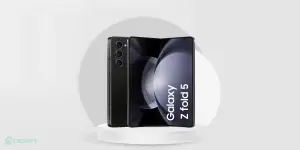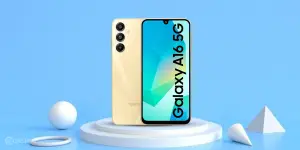Mobile Processor Ranking have a major role to play in the overall performance and functioning of a phone. Whether you are a gamer, streamer, multitasker or someone who needs phone for basic usage, having the best processor for mobile phone makes all the difference.
By April 2025, companies that make chipsets, like Qualcomm, MediaTek, and Apple, are competing more than ever. This is because of new improvements in technology, such as smaller 3nm and 4nm chip designs, better AI features, and improved 5G performance.
Here, you can find the best processor for mobile. Like best processor for Android mobile, iPhone, upcoming processor, and other mobile processor ranking. We have also shared scores from GeekBench and AnTuTu to help you make an informed decision. So, let’s get started.
Also Read: Snapdragon For India: Snapdragon 4s Gen 2, X Elite, Copilot+, All Details!
Best Processor For Mobile 2025: Complete List
We have compiled a detailed list to help you determine the best mobile processor ranking. This includes the top 100 mobile processors. It has the mobile processor ranking and benchmark scores from the most trusted sites: AnTuTu 10 and GeekBench 6. So, if you are wondering which processor is best for mobile, then here is the answer!
This list will help you find the best mobile processor ranking. Here is the complete list of mobile processor ranking:
| Rank | CPU | Brand | Rating | Score | Geekbench (S/M) | Cores | Max MHz | GPU |
|---|---|---|---|---|---|---|---|---|
| 1 | Snapdragon 8 Elite (Gen 4) | Qualcomm | 98 A+ | 2745854 | 3155 / 9723 | 8 (2+6) | 4320 | Adreno 830 |
| 2 | Dimensity 9400 Plus | MediaTek | 98 A+ | 2651570 | 2927 / 9000 | 8 (1+3+4) | 3730 | Mali-G925 MP12 |
| 3 | Dimensity 9400 | MediaTek | 95 A+ | 2605867 | 2874 / 8969 | 8 (1+3+4) | 3630 | Mali-G925 MP12 |
| 4 | Dimensity 9300 Plus | MediaTek | 94 A+ | 2111636 | 2302 / 7547 | 8 (1+3+4) | 3400 | Mali-G720 MP12 |
| 5 | Dimensity 9300 | MediaTek | 92 A | 2079810 | 2239 / 7538 | 8 (1+3+4) | 3250 | Mali-G720 MP12 |
| 6 | Snapdragon 8 Gen 3 | Qualcomm | 92 A | 2052774 | 2193 / 7304 | 8 (1+3+2+2) | 3300 | Adreno 750 |
| 7 | A18 Pro | Apple | 97 A+ | 1793917 | 3582 / 9089 | 6 (2+4) | 4050 | Apple A18 Pro GPU |
| 8 | Apple A18 | Apple | 95 A+ | 1622118 | 3466 / 8592 | 6 (2+4) | 4050 | Apple A18 GPU |
| 9 | A17 Pro | Apple | 93 A+ | 1533780 | 2953 / 7441 | 6 (2+4) | 3780 | Apple A17 GPU |
| 10 | A16 Bionic | Apple | 89 A | 1445704 | 2627 / 6838 | 6 (2+4) | 3460 | Apple A16 GPU |
| 11 | Exynos 2400e | Samsung | 86 A | 1781567 | 2099 / 6414 | 10 | 3110 | Samsung Xclipse 940 |
| 12 | Exynos 2400 | Samsung | 87 A | 1744941 | 2196 / 6964 | 10 | 3210 | Samsung Xclipse 940 |
| 13 | Dimensity 8400 | MediaTek | 82 A | 1633597 | 1571 / 6033 | 8 (1+3+4) | 3250 | Mali-G720 MP7 |
| 14 | Snapdragon 8 Gen 2 | Qualcomm | 81 A | 1557749 | 1991 / 5299 | 8 (1+2+2+3) | 3200 | Adreno 740 |
| 15 | A15 Bionic | Apple | 82 A | 1294678 | 2332 / 5736 | 6 (2+4) | 3230 | Apple A15 GPU |
| 16 | Snapdragon 8s Gen 3 | Qualcomm | 77 A | 1488885 | 2019 / 5570 | 8 (1+4+3) | 3000 | Adreno 735 |
| 17 | Dimensity 9200 Plus | MediaTek | 78 A | 1489987 | 2090 / 5532 | 8 (1+3+4) | 3350 | Mali-G715 MP11 |
| 18 | Dimensity 9200 | MediaTek | 79 A | 1468431 | 1949 / 5281 | 8 (1+3+4) | 3050 | Mali-G715 MP11 |
| 19 | Dimensity 8350 | MediaTek | 73 A | 1431343 | 1285 / 4325 | 8 (1+3+4) | 3350 | Mali-G615 MP6 |
| 20 | Dimensity 8300 | MediaTek | 71 A | 1406012 | 1398 / 4293 | 8 (1+3+4) | 3350 | Mali-G615 MP6 |
| 21 | Snapdragon 7 Plus Gen 3 | Qualcomm | 75 A | 1409887 | 1913 / 5098 | 8 (1+4+3) | 2800 | Adreno 732 |
| 22 | Snapdragon 8+ Gen 1 | Qualcomm | 70 A | 1299948 | 1767 / 4591 | 8 (1+3+4) | 3200 | Adreno 730 |
| 23 | Tensor G4 | 70 A | 1125355 | 2005 / 4835 | 8 (1+3+4) | 3100 | Mali-G715 MP7 | |
| 24 | A14 Bionic | Apple | 71 A | 1097581 | 2079 / 4779 | 6 (2+4) | 3100 | Apple A14 GPU |
| 25 | Tensor G3 | 66 A | 1152535 | 1760 / 4442 | 9 (1+4+4) | 2910 | Mali-G715 MP7 | |
| 26 | Dimensity 9000 Plus | MediaTek | 64 B | 1114121 | 1647 / 4481 | 8 (1+3+4) | 3200 | Mali-G710 MP10 |
| 27 | Snapdragon 8 Gen 1 | Qualcomm | 64 B | 1168329 | 1661 / 4002 | 8 (1+3+4) | 3000 | Adreno 730 |
| 28 | Snapdragon 7+ Gen 2 | Qualcomm | 62 B | 1124420 | 1697 / 4404 | 8 (1+3+4) | 2910 | Adreno 725 |
| 29 | Exynos 2200 | Samsung | 62 B | 1132394 | 1582 / 3669 | 8 (1+3+4) | 2800 | Samsung Xclipse 920 |
| 30 | Dimensity 9000 | MediaTek | 62 B | 1099019 | 1585 / 4169 | 8 (1+3+4) | 3050 | Mali-G710 MP10 |
| 31 | A13 Bionic | Apple | 62 B | 901330 | 1748 / 4161 | 6 (2+4) | 2650 | Apple A13 GPU |
| 32 | Kirin 9020 | HiSilicon | 61 B | 1248520 | 1603 / 5129 | 12 (2+6+4) | 2500 | Maleoon 920 |
| 33 | Snapdragon 888 Plus | Qualcomm | 57 B | 961175 | 1550 / 3887 | 8 (1+3+4) | 2995 | Adreno 660 |
| 34 | Exynos 1580 | Samsung | 56 B | 907608 | 1360 / 3893 | 8 (1+3+4) | 2900 | Samsung Xclipse 540 |
| 35 | Tensor G2 | 56 B | 936100 | 1439 / 3802 | 8 (2+2+4) | 2850 | Mali-G710 MP7 | |
| 36 | Dimensity 8800 | MediaTek | 55 B | 867431 | 1249 / 3453 | 8 (1+3+4) | 3200 | Mali-G610 MP6 |
| 37 | Snapdragon 888 | Qualcomm | 54 B | 915945 | 1532 / 3970 | 8 (1+3+4) | 2900 | Adreno 650 |
| 38 | Snapdragon 870 | Qualcomm | 53 B | 873894 | 1484 / 3850 | 8 (1+3+4) | 3150 | Adreno 650 |
| 39 | Exynos 980 | Samsung | 52 B | 812506 | 1360 / 3893 | 8 (1+3+4) | 2750 | Mali-G76 MP12 |
| 40 | Snapdragon 780G | Qualcomm | 52 B | 783551 | 1436 / 3782 | 8 (1+3+4) | 2800 | Adreno 642 |
| 41 | Dimensity 8200 | MediaTek | 51 B | 760134 | 1291 / 3494 | 8 (1+3+4) | 3150 | Mali-G610 MP6 |
| 42 | Dimensity 8100 | MediaTek | 50 B | 738209 | 1200 / 3350 | 8 (1+3+4) | 3100 | Mali-G610 MP6 |
| 43 | Snapdragon 765G | Qualcomm | 50 B | 715226 | 1274 / 3368 | 8 (1+3+4) | 2700 | Adreno 620 |
| 44 | Kirin 9000 | HiSilicon | 49 B | 710234 | 1142 / 3194 | 8 (1+3+4) | 2500 | Mali-G78 MP24 |
| 45 | Exynos 9800 | Samsung | 48 B | 701549 | 1248 / 3158 | 8 (1+3+4) | 2900 | Mali-G76 MP10 |
| 46 | Dimensity 8000 Plus | MediaTek | 46 B | 683103 | 1162 / 3001 | 8 (1+3+4) | 3000 | Mali-G710 MP8 |
| 47 | Snapdragon 765 | Qualcomm | 45 B | 689154 | 1226 / 3150 | 8 (1+3+4) | 2750 | Adreno 640 |
| 48 | Exynos 9611 | Samsung | 45 B | 677369 | 1117 / 3075 | 8 (1+3+4) | 2550 | Mali-G72 MP3 |
| 49 | Snapdragon 750G | Qualcomm | 43 B | 622345 | 1183 / 3002 | 8 (1+3+4) | 2700 | Adreno 618 |
| 50 | Dimensity 7000 | MediaTek | 43 B | 603390 | 1039 / 2945 | 8 (1+3+4) | 2750 | Mali-G57 MP5 |
| 51 | Snapdragon 720G | Qualcomm | 42 B | 596734 | 1124 / 2901 | 8 (1+3+4) | 2600 | Adreno 618 |
| 52 | Exynos 1080 | Samsung | 42 B | 585901 | 1040 / 2772 | 8 (1+3+4) | 2550 | Mali-G78 MP10 |
| 53 | Exynos 9820 | Samsung | 40 B | 573248 | 980 / 2664 | 8 (1+3+4) | 2500 | Mali-G76 MP10 |
| 54 | Kirin 980 | HiSilicon | 39 B | 536478 | 946 / 2542 | 8 (1+3+4) | 2350 | Mali-G76 MP10 |
| 55 | Snapdragon 710 | Qualcomm | 38 B | 513226 | 923 / 2432 | 8 (1+3+4) | 2200 | Adreno 616 |
| 56 | Exynos 9825 | Samsung | 38 B | 505820 | 880 / 2432 | 8 (1+3+4) | 2300 | Mali-G77 MP9 |
| 57 | Snapdragon 680 | Qualcomm | 37 B | 501274 | 889 / 2380 | 8 (1+3+4) | 2100 | Adreno 610 |
| 58 | Snapdragon 632 | Qualcomm | 37 B | 490233 | 860 / 2304 | 8 (1+3+4) | 2150 | Adreno 508 |
| 59 | Snapdragon 626 | Qualcomm | 36 B | 479364 | 850 / 2251 | 8 (1+3+4) | 2100 | Adreno 506 |
| 60 | Kirin 710 | HiSilicon | 35 B | 467592 | 808 / 2190 | 8 (1+3+4) | 2000 | Mali-G51 MP4 |
| 61 | Snapdragon 625 | Qualcomm | 34 B | 452214 | 890 / 2210 | 8 (1+3+4) | 1800 | Adreno 506 |
| 62 | Snapdragon 615 | Qualcomm | 33 B | 441214 | 870 / 2150 | 8 (1+3+4) | 1900 | Adreno 405 |
| 63 | Snapdragon 616 | Qualcomm | 32 B | 430019 | 840 / 2105 | 8 (1+3+4) | 2000 | Adreno 405 |
| 64 | Exynos 5440 | Samsung | 31 B | 415325 | 800 / 2080 | 8 (1+3+4) | 1800 | Mali-T628 MP6 |
| 65 | Kirin 620 | HiSilicon | 30 B | 398120 | 780 / 2000 | 8 (1+3+4) | 1500 | Mali-450 MP4 |
| 66 | Snapdragon 610 | Qualcomm | 30 B | 389403 | 755 / 1900 | 8 (1+3+4) | 1800 | Adreno 405 |
| 67 | Snapdragon 660 | Qualcomm | 29 B | 378100 | 710 / 1850 | 8 (1+3+4) | 2200 | Adreno 512 |
| 68 | Snapdragon 625 | Qualcomm | 28 B | 360880 | 710 / 1800 | 8 (1+3+4) | 1800 | Adreno 506 |
| 69 | Exynos 5410 | Samsung | 28 B | 352643 | 720 / 1750 | 8 (1+3+4) | 1800 | Mali-T628 MP6 |
| 70 | Snapdragon 450 | Qualcomm | 27 B | 336102 | 655 / 1620 | 8 (1+3+4) | 1800 | Adreno 506 |
| 71 | Kirin 659 | HiSilicon | 26 B | 324572 | 650 / 1600 | 8 (1+3+4) | 1800 | Mali-T830 MP2 |
| 72 | Snapdragon 435 | Qualcomm | 25 B | 312881 | 640 / 1550 | 8 (1+3+4) | 1800 | Adreno 505 |
| 73 | Snapdragon 400 | Qualcomm | 24 B | 300134 | 630 / 1500 | 8 (1+3+4) | 1500 | Adreno 305 |
| 74 | Exynos 3830 | Samsung | 23 B | 290999 | 605 / 1450 | 8 (1+3+4) | 1500 | Mali-T720 MP2 |
| 75 | Snapdragon 410 | Qualcomm | 23 B | 289845 | 600 / 1400 | 8 (1+3+4) | 1300 | Adreno 306 |
| 76 | Snapdragon 405 | Qualcomm | 22 B | 278214 | 580 / 1300 | 8 (1+3+4) | 1300 | Adreno 306 |
| 77 | Kirin 620 | HiSilicon | 21 B | 267019 | 570 / 1200 | 8 (1+3+4) | 1200 | Mali-450 MP4 |
| 78 | Exynos 5410 | Samsung | 20 B | 259832 | 560 / 1150 | 8 (1+3+4) | 1100 | Mali-T628 MP4 |
| 79 | Snapdragon 200 | Qualcomm | 19 B | 246818 | 540 / 1000 | 4 (1+3) | 1300 | Adreno 203 |
| 80 | Kirin 620 | HiSilicon | 18 B | 238032 | 510 / 900 | 4 (1+3) | 1000 | Mali-450 MP2 |
| 81 | Snapdragon 212 | Qualcomm | 17 B | 234519 | 510 / 850 | 4 (1+3) | 800 | Adreno 304 |
| 82 | Kirin 650 | HiSilicon | 17 B | 229867 | 500 / 820 | 4 (1+3) | 1100 | Mali-T830 MP3 |
| 83 | Exynos 3740 | Samsung | 16 B | 223541 | 490 / 800 | 4 (1+3) | 950 | Mali-T720 MP2 |
| 84 | Exynos 3450 | Samsung | 15 B | 215485 | 480 / 770 | 4 (1+3) | 950 | Mali-T400 MP2 |
| 85 | Snapdragon 210 | Qualcomm | 14 B | 204200 | 470 / 750 | 4 (1+3) | 800 | Adreno 304 |
| 86 | Kirin 620 | HiSilicon | 13 B | 196548 | 460 / 700 | 4 (1+3) | 850 | Mali-450 MP4 |
| 87 | Exynos 3300 | Samsung | 12 B | 190113 | 440 / 680 | 4 (1+3) | 850 | Mali-G31 MP2 |
| 88 | Snapdragon 400 | Qualcomm | 11 B | 183746 | 430 / 650 | 4 (1+3) | 900 | Adreno 305 |
| 89 | Exynos 3560 | Samsung | 10 B | 179299 | 420 / 600 | 4 (1+3) | 750 | Mali-T400 MP2 |
| 90 | Kirin 628 | HiSilicon | 9 B | 171210 | 400 / 550 | 4 (1+3) | 800 | Mali-450 MP2 |
| 91 | Snapdragon 410 | Qualcomm | 8 B | 163248 | 390 / 520 | 4 (1+3) | 700 | Adreno 306 |
| 92 | Exynos 3500 | Samsung | 7 B | 155780 | 370 / 470 | 4 (1+3) | 650 | Mali-G31 MP2 |
| 93 | Snapdragon 209 | Qualcomm | 6 B | 147614 | 340 / 460 | 4 (1+3) | 600 | Adreno 304 |
| 94 | Kirin 620 | HiSilicon | 5 B | 140202 | 320 / 400 | 4 (1+3) | 700 | Mali-450 MP2 |
| 95 | Exynos 3100 | Samsung | 4 B | 132332 | 310 / 390 | 4 (1+3) | 500 | Mali-T400 MP2 |
| 96 | Snapdragon 208 | Qualcomm | 3 B | 125543 | 300 / 400 | 4 (1+3) | 600 | Adreno 305 |
| 97 | Exynos 2100 | Samsung | 2 B | 118248 | 280 / 370 | 4 (1+3) | 450 | Mali-G31 MP2 |
| 98 | Kirin 638 | HiSilicon | 1 B | 109788 | 250 / 300 | 4 (1+3) | 450 | Mali-450 MP2 |
| 99 | Exynos 2201 | Samsung | 1 B | 101234 | 220 / 280 | 4 (1+3) | 420 | Mali-G71 MP2 |
| 100 | Snapdragon 180 | Qualcomm | 0 B | 95000 | 200 / 280 | 4 (1+3) | 400 | Adreno 302 |
Now that we know which processor is best for mobile, let’s check out other things in detail.
Also read: AMD Ryzen 7 vs Intel Core i7: Which Is The Better Flagship CPU?
Latest Trends In Best Processor For Mobile Ranking
Let’s check out the latest trends that are shaping the list in March 2025:
- 3nm Process Dominance: Most high-end processors (like Dimensity 9400, Snapdragon 8 Elite, and A18 Pro) now use 3nm technology. This makes them more efficient and fast.
- AI Integration: Chips now focus on using AI directly on the device for tasks like improving photos, voice recognition, and creating new content. MediaTek and Qualcomm are leaders here. Apple is still improving its Neural Engine.
- Gaming Focus: Better graphics and cooling systems support mobile gaming, with chips like Snapdragon 8 Elite excelling in games like Genshin Impact.
- Mid-Range Power Surge: Mid-range chips (like Dimensity 8300) offer features of high-end chips, such as 5G and fast screen refresh rates at lower price.
What Is A Mobile Processor?
In technical language, a processor is an electronic circuit that handles the device’s instructions. It has multiple logic gates, an arithmetic logic unit, combination logic, main memory and IO. However, today’s mobile processors have different threads. They include an AI engine and image signal phone processor ranking. These make the best mobile processors.
Also read: Best Smartphone Camera Ranking List
These best processor for mobile are made to meet the needs of smartphone users.
Processors are programmed to handle five tasks:
- computation
- voice calls
- image construction
- camera calibration
- cellular networking
Today’s processors are called System-On-Chip (SoC). They are meant to be smart for the future. However, they are complex. They may need more tests to determine some performance improvements for processor ranking mobile.
Also read: How To Track Your Lost Mobile Phone With IMEI Number?
Key Processor Terms Explained
Let’s quickly explain the most used terms when it comes to best processor for mobile. This way, you will be able to fully understand Phone Processor Ranking:
CPU (Central Processing Unit)
The CPU is like the brain of your phone. It handles apps and helps you multitask. More cores (e.g., 8 cores in Snapdragon 8 Elite) and faster speeds (e.g., 4.32GHz). It can make your phone run smoothly, even when using many apps simultaneously.
GPU (Graphics Processing Unit)
The GPU controls graphics, like games and videos. A strong GPU (like Adreno 830 or Mali-G925) helps run games like Genshin Impact smoothly. It also makes visuals look great.
NPU (Neural Processing Unit)
The NPU handles smart tasks, like improving photos or understanding voice commands. The A18 Pro’s 16-core NPU helps make your camera photos better and makes voice assistants work faster.
ISP (Image Signal Processor)
The ISP helps improve your camera quality by processing photos. The Dimensity 9400’s Imagiq 1090 ISP can support very high-quality pictures, like 320MP photos.
Modem
The modem controls your internet and network speeds. The Snapdragon X80 modem in the Snapdragon 8 Elite supports super-fast 5G downloads (up to 10Gbps). So, you can download things really quickly.
What Do Benchmarks Mean?
Benchmarking is like a big test for your smartphone’s brain, called SoC (System on a Chip). Imagine your phone is a student, and we want to see how well it can do different things, like playing games, saving batteries, and using its brain (CPU).
Also read: Best Graphics Cards (GPU) Ranking List
After the test, we get a score that tells us how good the phone’s brain is at these tasks. Benchmarking shows us how well the best mobile processor ranking handles tasks.
Also Read:Google Is Recording Your Voice, Here’s How To Listen And Delete Them
How To Understand AnTuTu Benchmark?
AnTuTu scores your SoC on various parameters. Their in-house algorithm tests your system chip and provides an overall score. So, naturally, the higher the score, the better the performance. For example, a processor with 4,00,000 scores will perform twice as fast compared to an SoC with 2,00,000 scores. However, AnTuTu has not set a standard for their scores.
For the best mobile processor in 2025, buy a phone with an AnTuTu score of at least 1 million. You consider the best mobile processors. They are the Snapdragon 8s Gen 3 and MediaTek Dimensity 8300. They offer flagship performance at half the price.
Also Read: Explained: How Does Netflix Work? Behind The Scene Of Our Black Screen
How To Understand Geekbench Benchmark?
Geekbench scores are calculated on various matrices. Moreover, according to Geekbench, each score is measured by performing multiple computation tasks on the SoC. Real-world studies usually use Crypto workloads, floating-point tests, and API analysis. In short, a higher score means better performance of the mobile processor.
Best Processor For Android Mobile Ranking List
Here is a list of the best Android mobile processors. They offer top performance and power efficiency.
| S.No. | Mobile Processor Name | Phone |
|---|---|---|
| 1 | Snapdragon 8 Elite | Realme GT 7 Pro,ASUS ROG Phone 9 Pro, iQOO 13 |
| 2 | Dimensity 9400 | Oppo Find X8, Vivo X200, Xiaomi Redmi K80 Ultra |
| 3 | Snapdragon 8 Gen 3 | iQOO 12 5G, Samsung Galaxy S24, Xiaomi 14, OnePlus 12, Honor Magic 6 Pro, Realme GT 5 Pro |
| 4 | Dimensity 9300+ | Vivo X100s, Vivo X100s Pro, iQOO Neo 9s Pro |
| 5 | Dimensity 9300 | Vivo X100 Pro 5G, Vivo X100 |
| 6 | Exynos 2400 | Samsung Galaxy S24, Samsung Galaxy S24 Plus |
| 7 | Snapdragon 8s Gen 3 | Poco F6, Xiaomi 14 Civi, Honor 200 Pro, Motorola Razr 50 Ultra |
| 8 | Snapdragon 8 Gen 2 | OnePlus 11, Samsung Galaxy S23 series, OnePlus 12R, iQOO Neo 9 Pro, Xiaomi 13 Pro, OnePlus Open |
| 9 | Dimensity 9200 Plus | Xiaomi 13T Pro |
| 10 | Snapdragon 7 Plus Gen 3 | OnePlus Nord 4, Realme GT 6T, |
Best MediaTek Dimensity Phone Processor Ranking List
Here is the complete list of best processor for mobile for Android ranking for MediaTek chipsets:
| MOBILE PROCESSOR RANKING | NAME | ANTUTU BENCHMARK | GEEKBENCH (SINGLE CORE) | GEEKBENCH (MULTI-CORE) |
|---|---|---|---|---|
| 1 | MediaTek Dimensity 9400 | 25,37,181 | 2,683 | 7,767 |
| 2 | MediaTek Dimensity 9300 Plus* | 20,94,061 | 2,302 | 7,547 |
| 3 | MediaTek Dimensity 9300 | 20,38,916 | 2,203 | 7,295 |
| 4 | MediaTek Dimensity 9200 Plus | 14,45,926 | 1,854 | 5,066 |
| 5 | MediaTek Dimensity 8300 Ultra | 12,99,678 | 1,239 | 4,189 |
| 6 | MediaTek Dimensity 8200 | 9,36,985 | 1,020 | 3,384 |
| 7 | MediaTek Dimensity 7300 Energy | 7,39,074 | 1,050 | 2,957 |
| 8 | MediaTek Dimensity 7350 Pro | 7,72,758 | 1,121 | 2,203 |
| 9 | MediaTek Dimensity 7200 | 7,28,534 | 1,190 | 2,681 |
| 10 | MediaTek Dimensity 7050 | 6,01,441 | 903 | 2,325 |
Best Qualcomm Snapdragon Processor Ranking Mobile List
Here is the complete list of best processor for mobile for Android ranking for the Snapdragon processor list:
| PROCESSOR RANKING | NAME | ANTUTU BENCHMARK | GEEKBENCH SCORE (SINGLE-CORE) | GEEKBENCH SCORE (MULTI-CORE) |
|---|---|---|---|---|
| 1 | Qualcomm Snapdragon 8 Elite | 28,05,924 | 3,093 | 9,854 |
| 2 | Qualcomm Snapdragon 8 Gen 3 | 21,86,467 | 2,303 | 7,376 |
| 3 | Qualcomm Snapdragon 8 Gen 2 | 16,11,015 | 2,023 | 5,564 |
| 4 | Qualcomm Snapdragon 8s Gen 3 | 15,09,605 | 1,930 | 5,017 |
| 5 | Qualcomm Snapdragon 7+ Gen 3 | 14,50,949 | 1,826 | 4,544 |
| 6 | Qualcomm Snapdragon 7 Gen 3 | 8,19,347 | 1,138 | 2,950 |
| 7 | Qualcomm Snapdragon 7s Gen 3 | 7,96,785 | 1,198 | 3,232 |
| 8 | Qualcomm Snapdragon 7 Gen 1 Accelerated Edition | 7,14,295 | 1,117 | 3,048 |
| 9 | Qualcomm Snapdragon 7s Gen 2 | 6,64,130 | 872 | 2,826 |
| 10 | Qualcomm Snapdragon 6s Gen 3 | 4,71,687 | 926 | 2,145 |
Best Samsung Exynos Phone Processor Ranking List
Here is the list of best processor for mobile ranking for Android Samsung Exynos chipsets:
| Rank | Processor | Key Features & Use Cases |
|---|---|---|
| 1 | Exynos 2400 | Fast 10-core CPU, AI, and Ray Tracing GPU. Used in Galaxy S24 series. |
| 2 | Exynos 2400e | Slightly better efficiency than Exynos 2400. Used in some Galaxy devices. |
| 3 | Exynos 2200 | Great graphics with AMD RDNA2 GPU. Found in Galaxy S22 series. |
| 4 | Exynos 2100 | 5nm process, good 5G and AI. Used in Galaxy S21 series. |
| 5 | Exynos 1480 | Mid-range chip with better GPU and efficiency. Powers Galaxy A55. |
| 6 | Exynos 1380 | Good for multitasking, used in Galaxy A54 and M-series. |
| 7 | Exynos 1080 | Good for gaming, used in Vivo and some Samsung devices. |
| 8 | Exynos 990 | Older flagship chip, used in Galaxy S20 and Note 20 series. |
Best Google Tensor Processor Ranking Mobile List
Here is the complete list of best processor for Android mobile ranking for Google Tensor chipsets:
| Rank | Processor | Release Year | Key Features | Notable Devices |
|---|---|---|---|---|
| 1 | Google Tensor G4 | 2024 | 3nm process, improved AI, enhanced efficiency | Pixel 9, Pixel 9 Pro |
| 2 | Google Tensor G3 | 2023 | 4nm process, upgraded GPU, AI optimizations | Pixel 8, Pixel 8 Pro |
| 3 | Google Tensor G2 | 2022 | 5nm process, improved ISP, modest CPU gains | Pixel 7, Pixel 7 Pro, Pixel Fold |
| 4 | Google Tensor G1 | 2021 | 5nm process, first-gen AI and ML focus | Pixel 6, Pixel 6 Pro |
Best Apple Processor Ranking List
Here is the complete list of best processor for iOS mobile ranking for Apple devices:
| PROCESSOR RANKING | NAME | ANTUTU BENCHMARK | GEEKBENCH SCORE (SINGLE-CORE) | GEEKBENCH SCORE (MULTI-CORE) |
|---|---|---|---|---|
| 1 | Apple A18 Pro | 17,13,073 | 3,337 | 8,218 |
| 2 | Apple A18 | 15,39,646 | 3,336 | 7,988 |
| 3 | Apple A17 Pro | 15,28,179 | 2,953 | 7,441 |
| 4 | Apple A16 Bionic | 14,46,983 | 2,627 | 6,838 |
| 5 | Apple A15 Bionic | 12,88,091 | 2,332 | 5,736 |
| 6 | Apple A14 Bionic | 10,91,814 | 2,079 | 4,779 |
| 7 | Apple A13 Bionic | 8,89,260 | 1,748 | 4,161 |
| 8 | Apple A12 Bionic | 6,48,637 | 1,292 | 2,837 |
| 9 | Apple A11 Bionic | 4,79,366 | 1,087 | 2,346 |
| 10 | Apple A10 Fusion | 4,21,512 | 878 | 1,319 |
Best Upcoming Mobile Processor Ranking List
Before choosing the best mobile processor, check on upcoming ones and their expected performance. Thanks to the constant leaks and rumours, you can now make an informed decision and get details about the new processor before its launch. Do note that this list is based on rumours and leaks, so the final benchmark scores and performance may vary. Let’s take a look at the best upcoming processor for mobile ranking:
| Best Upcoming Processor Ranking | AnTuTu v10 | Geekbench 6 | Expected Phones |
| Samsung Exynos 2500 | N/A | 2359/8211 | Samsung Galaxy S25, Samsung Galaxy S25 Plus |
| Google Tensor G5 | N/A | 1323/4004 | Google Pixel 10 |
| Apple A19 Pro | N/A | N/A | Apple iPhone 17 Pro |
| Snapdragon 8 Elite Gen 2 | N/A | 4000 | Xiaomi 16, OnePlus 14 |
| Snapdragon 8s Elite | N/A | N/A | Xiaomi Civi 4 Pro |
| MediaTek Dimensity 7400 | N/A | N/A | Designed for Midrangers |
| MediaTek Dimensity 7400x | N/A | N/A | Mainly for Foldables |
| MediaTek Dimensity 9400+ | NA | NA | Xiaomi 15T Pro, Redmi K80 Ultra |
| Snapdragon 8s Gen 4 | N/A | N/A | Redmi Turbo 4 Pro, iQOO Z10 Turbo Pro, Xiaomi CIVI 5 Pro, OPPO K13 Pro |
Best Budget-Friendly Processors For Mobile 2025
Let’s check out the full list of best budget processors for 2025:
| Processor | AnTuTu Score | Features | Perfect For | Example Device |
|---|---|---|---|---|
| Snapdragon 4s Gen 2 | 400,000 | 4nm, 5G support | Budget 5G phones | Redmi A4 5G (Rs. 8,499) |
| MediaTek Dimensity 7020 | 450,000 | Reliable for casual use & light gaming | Casual use, light gaming | Realme Narzo 70 |
| UNISOC T820 | 350,000 | Basic performance | Entry-level phones | ZTE Nubia Neo |
These processors are great for basic tasks like social media, streaming, and calls. But, they may not handle heavy gaming like Call of Duty at max settings.
Best Mobile Processor Ranking – Market Share
If you are curious about which Best Processor for mobile maker is on top, check the table below. It shows the mobile processor market share in Q1 2025.
| Manufacturer | Market Share |
| MediaTek (Dimensity) | 40 per cent |
| Qualcomm (Snapdragon) | 23 per cent |
| Apple (Bionic) | 17 per cent |
| UNISOC | 9 per cent |
| Samsung | 6 per cent |
| HiSilicon (Huawei) | 3 per cent |
| Others | 1 per cent |
Top Performing Phones In AnTuTu Mobile Processor Ranking List
AnTuTu, a popular benchmarking app, has released its January 2025 Mobile Processor Ranking List. AnTuTu is a benchmarking app. It scores your smartphone based on metrics like CPU, GPU, memory, and UX.
| Smartphone | Processor | RAM And Storage | Score |
| Vivo X200 Pro | MediaTek Dimensity 9400 | 16GB+1TB | 2896624 |
| OnePlus Ace 5 Pro | Snapdragon 8 Elite | 16GB+1TB | 2888193 |
| Red Magic 10 Pro+ | Snapdragon 8 Elite | 24GB+1TB | 2868701 |
| iQOO 13 | Snapdragon 8 Elite | 16GB+1TB | 2853651 |
| iQOO Neo 10 Pro | MediaTek Dimensity 9400 | 16GB+1TB | 2836633 |
| Vivo X200 | MediaTek Dimensity 9400 | 16GB+1TB | 2816213 |
| Vivo X200 Pro Mini | MediaTek Dimensity 9400 | 16GB+1TB | 2799774 |
| OnePlus 13 | Snapdragon 8 Elite | 24GB+1TB | 2752630 |
| Oppo Find X8 Pro | MediaTek Dimensity 9400 | 16GB+1TB | 2706662 |
| Honor Magic 7 Pro | Snapdragon 8 Elite | 16GB+512GB | 2684156 |
Five in ten phones use the Snapdragon 8 Elite, and the other five use the MediaTek Dimensity 9400. As Thanos once said, “Perfectly balanced as all things should be.”
Best Processor For Mobile Based On Power Efficiency And Node Size
Each best mobile processor ranking has small transistors and gates. They perform thousands of calculations. These transistors consume power, so the smaller the transistor size and their node (3nm and 4nm), the more power-efficient they will be.
| Processor | Node | TDP (Thermal Design Power) | Fabricator |
| Apple A18 Pro | 3nm | 8W | TSMC |
| Snapdragon 8 Elite | 3nm | 5.8W | TSMC |
| MediaTek Dimensity 9400 | 3nm | 6.4W | TSMC |
| Snapdragon 8 Gen 3 | 4nm | 6.3W | TSMC |
| MediaTek Dimensity 9300 | 4nm | 7W | TSMC |
| Samsung Exynos 2400 | 4nm | 6W | Samsung |
| Snapdragon 8s Gen 3 | 4nm | 6W | TSMC |
| Google Tensor G3 | 4nm | 6W | Samsung |
| Apple A16 Bionic | 4nm | 8W | TSMC |
How Best Processor In Mobile Perform In Real Life?
- Snapdragon 8 Elite: It is there in the ASUS ROG Phone 9. It can run games like Genshin Impact at over 120fps on high settings with little slowdown. It is so good even after 30 minutes of gaming. This one if amazing for gamers and power users who need consistent performance.
- MediaTek Dimensity 9400: This processor was used in the Vivo X200 Pro. It supports 4K video editing smoothly in apps like CapCut and supports AI for better photos. If you are a content creator, this one is for you.
- Apple A18 Pro: You will see this in the iPhone 16 Pro Max. It runs games like Resident Evil 4 well (e.g., you can also use apps like Procreate). A good choice for professionals and casual gamers.
- Mid-Range (Snapdragon 7+ Gen 3): You saw this in the Realme GT 6T. This processor runs PUBG Mobile at 60 FPS on high settings with just a bit of heat after an hour of gaming. A solid choice for gamers on a budget.
Recommended Mobile Devices – User Needs and Processor Performance
Let’s take a look at the best processor for mobile based on your needs:
Category | Who Should Consider | Recommended Processor | Phones Worth Taking A Look At |
| Flagship Performance | Professionals needing powerful devices for multitasking and demanding apps. | Apple A18 Pro Qualcomm Snapdragon 8 Elite MediaTek Dimensity 9400 | Apple iPhone 16 Pro Max (A18 Pro) Realme GT 7 Pro (Snapdragon 8 Elite) Vivo 200 Pro (MediaTek Dimensity 9400) |
| Flagship Killer (High-End Performance On Budget) | Students and budget-conscious users who want the best possible performance without breaking the bank | Qualcomm Snapdragon 8s Gen 3 Qualcomm Snapdragon 7+ Gen 3 MediaTek Dimensity 8300 Ultra | Poco F6 (Snapdragon 8s Gen 3) Realme GT 6T (Snapdragon 7+ Gen 3) Poco X6 Pro (MediaTek Dimensity 8300 Ultra) |
| Gaming Enthusiasts | Hardcore mobile gamers who prioritize sustained performance over everything else | Qualcomm Snapdragon 8 Elite Apple A18 Pro MediaTek Dimensity 9400 | ASUS ROG Phone 9 (Snapdragon 8 Elite) Apple iPhone 16 Pro (A18 Pro) Vivo X200 Pro (Dimensity 9400) |
| Casual Users | Casual users who mainly use their phones for social media, browsing, and occasional gaming. | Qualcomm Snapdragon 7 Gen 3 MediaTek Dimensity 7200 Ultra Qualcomm Snapdragon 7s Gen 3 | OnePlus Nord CE 4 (Snapdragon 7 Gen 3) Nothing Phone (2a) (MediaTek Dimensity 7200 Ultra) Realme 13 Pro Plus (Snapdragon 7s Gen 3) |
How to Pick the Best Processor for Your Phone in 2025?
Choosing the right processor for your phone can be confusing because of many options. Here’s how to choose the best processor for mobile 2025:
Step 1: Define Your Usage
Think about how you use your phone.
For gaming:
Choose a processor with a strong graphics chip, like Snapdragon 8 Elite, for better gaming performance.
For regular use:
If you mainly use your phone for social media, browsing, and watching videos, a mid-range processor (like Dimensity 7200) is good enough.
Step 2: Set a Budget
Your budget affects your options.
High-end processors (like Apple A18 Pro) are expensive but give the best performance.
Mid-range processors (like Snapdragon 7+ Gen 3) are more affordable and still perform well.
Step 3: Check Compatibility
Make sure the processor supports the features you need.
If you want 5G, pick a processor that supports it, like Snapdragon 4s Gen 2 (good for budget 5G).
Step 4: Look Beyond Benchmarks
Don’t just look at benchmark scores (like AnTuTu).
High scores sound good, but real reviews are better. See if there are any problems like lag, heating, or poor battery life.
Step 5: Future-Proofing
If you plan to keep your phone for a long time, choose a newer processor.
3nm processors (like Dimensity 9400) are more efficient and perform better, so they will last longer. Dimensity 9400 Plus is also debuting in April 2025.
You can also wait for new processors coming out soon.
By following these steps, you can pick a processor that fits your budget and needs and will work well for years to come.
MediaTek Dimensity Vs Qualcomm Snapdragon
Qualcomm chipsets are known for their high performance and gaming features. MediaTek processors are slowly catching up to them.
Furthermore, Snapdragon chipsets usually have better support for gaming as developers prefer to optimise them. On the other hand, MediaTek chipsets provide longer battery backups as they are power efficient and generate less heat.
Another point to consider is this. If you love custom ROMs and tinkering with your phone, use a Qualcomm chipset. It’s the best mobile processor. MediaTek processors have poor custom ROM support. The company does not release the source code. This is also why games are not optimised for this chipset.
The Snapdragon 8 Elite beats the MediaTek Dimensity 9400 in a test of the newest processors. But, wider acceptance has made Qualcomm chipsets the best mobile processors. Both offer similar raw performance.
| Aspects | MediaTek Dimensity | Qualcomm Snapdragon |
|---|---|---|
| Performance | Good performance | Better sustained performance |
| Gaming | No high frame rate and graphics options support despite being powerful | Support for high frame rate options and better graphics |
| Battery Life | More power efficient resulting in longer battery life | Less power efficient |
| Features | Generative AI, Hardware Accelerated Ray Tracing, LLM Models, MediaTek Adaptive Gaming Technology, | Snapdragon Super Game Resolution, Snapdragon Sound, Adreno Frame Motion Engine, Generative AI, Hardware Accelerated Ray Tracing |
| Community Support (Custom ROM & Optimization) | Less community support, including the development of Custom ROM due to a lack of source codes | Superior community support from both game and ROM developers |
Google Tensor G4 Vs Qualcomm Snapdragon 8 Gen 3
Google unveiled its Pixel 9 smartphones. They are powered by the Tensor G4 chipset. It collaborated with Samsung to create a custom chipset. It is in the Google Pixel 9, Pixel 9 Pro, Pixel 9 Pro XL, and Pixel 9 Pro Fold.
But how does it compare against Qualcomm’s flagship processor, the Snapdragon 8 Gen 3? Before we look at the two best mobile processors, let’s quickly review their specs and features.
Tensor G4 vs Snapdragon 8 Gen 3 Tech Specs
| Aspect | Tensor G4 | Snapdragon 8 Gen 3 |
| Process | 4nm | 4nm |
| Manufacturing Node | Samsung | TSMC |
| Cores | 8 | 8 |
| CPU Structure | 1 x Cortex X4 at 3.1 GHz 3 x Cortex A720 at 2.6 GHz 4 Cortex A520 at 1.92 GHz | 1 x Cortex X4 at 3.3 GHz 3 Cortex A720 at 3.1 GHz 2 Cortex A720 at 2.96 GHz 2 Cortex A520 at 2.27 GHz |
| Clock Speed | 3.1 GHz | 3.3 GHz |
| GPU | Mali-G715 MP7 | Adreno 750 |
| RAM Type | LPDRR5X | LPDRR5X |
| UFS Storage Type | 3.1 | 4.0 |
The 8 Gen 3 has an edge based on specs alone. It has faster UFS 4.0 storage, higher clock speeds, and a better TSMC manufacturing node. In contrast, the Tensor G4 has outdated UFS 3.1 storage and lower clock speeds.
Benchmark Scores For Google Tensor G4 and Snapdragon 8 Gen 3
Now, let’s look at the benchmark scores of both flagship chipsets. These scores have been compiled from online reviews and our personal experience of the Snapdragon 8 Gen 3.
| Benchmark Type | Qualcomm Snapdragon 8 Gen 3 | Google Tensor G4 |
| Geekbench (Single Core/Multi Core) | 2091/6484 | 1867/3721 |
| AnTuTu | 1966227 | 1253407 |
| PCMark | 20537 | 13680 |
| GFXBench | 166 FPS | 120 FPS |
| Burnout | 74.1 per cent | 39 per cent |
| CPU Throttling | 86 per cent | 71 per cent |
The Snapdragon 8 Gen 3 is a clear winner over the Google Tensor G4. Not only is it faster in raw performance, but it is also better when it comes to sustained performance. The 8 Gen 3 has a significant lead over the Tensor G4 in benchmarks as well as technical specifications. Overall, if you want the best possible performance on Android then it’s best to go for the Snapdragon 8 Gen 3.
Snapdragon 8 Elite vs Dimensity 9400 vs Apple A18 Pro
As Apple, Qualcomm and MediaTek unveiled their new flagship chipsets, it’s time to take a detailed look at their lineup. All of these processors will offer top-of-the-line specifications and compete for the top spot in the list of best processor for mobile.
The Apple A18 Pro has made its debut with the Apple iPhone 16 Pro models, while the Snapdragon 8 Gen Elite and Dimensity 9400 have also been unveiled.
Specifications Of All Three Processors
But how does each chipset fare? Let’s take a quick rundown of the technical specifications of all three best processor for mobile.
| Aspects | Qualcomm Snapdragon 8 Elite | MediaTek Dimensity 9400 | Apple A18 Pro |
| Process | 3nm | 3nm (N3E) | 3nm (N3E) |
| Manufacturing Node | TSMC | TSMC | TSMC |
| Cores | 8 cores | 8 cores | 6 cores |
| CPU Structure | 2 x 4.32 GHz 6 x 3.53 GHz | 1 x 3.63 GHz 3 x 2.96 GHz 4 x 2.27 GHz | 2 x 3.89 GHz 3.4 4 x 2.2 GHz |
| Clock Speed | 4.32GHz | 3.62 GHz | 3.89 GHz |
| GPU | Adreno 830 | Immortalis G920 | Apple Bionic GPU |
| RAM Type | LPDRR5X | LPDRR5X | LPDRR5T |
| Storage Type | UFS 4.0 | NVMe | UFS 4.0 |
All three processors are based on the cutting-edge 3nm fabrication process by TSMC. Furthermore, the Snapdragon 8 Elite has the fastest clock speed on a mobile chipset, breaking the 4GHz barrier with a clock speed of 4.32 GHz.
The RAM and storage speed types are also the latest LPDDR5x on all phones, and you get UFS 4.0 on 8 Gen 4 and Dimensity 9400, while the A18 Pro relies on NVMe storage.
The Snapdragon 8 Elite is the first processor to support Unreal Engine 5.3 with Nanite. It enables stunning 3D game environments. It has a 24MB L2 cache and supports 5,300MHz LPDDR5X RAM.
Apple A18 Pro Vs Apple A17 Pro
Apple unveiled its iPhone 16 series, at its Glowtime event. These include the Apple iPhone 16, Apple iPhone 16 Plus, Apple iPhone 16 Pro and the Apple iPhone 16 Pro Max. The Pro and Pro Max use the new Apple A18 Pro chipset, bringing significant upgrades in AI and processing power. But are these chipsets a substantial leap over their predecessor, the Apple A17 Pro? It’s time to find out in this detailed comparison of the best processor for mobile for iOS.
Specifications Of The Processor
| Aspect | Apple A18 Pro | Apple A17 Pro |
| Process | 3nm N3E | 3nm |
| Manufacturing Node | TSMC | TSMC |
| Cores | 6 | 6 |
| CPU Structure | 2x 3.89 GHz 4 x 2.2GHz | 2 x 3.78 GHz 4 x 2.11 GHz |
| Clock Speed | 3.8 GHz | 3.7 GHz |
| GPU | A18 Pro GPU at 1450MHz | A17 Pro GPU at 1398 MHz |
| RAM Type | LPDRR5T | LPDRR5T |
| UFS Storage Type | NVMe | NVMe |
| Modem | Snapdragon X75 | Snapdragon X70 |
| Wi-Fi Support | Wi-Fi 7 | Wi-Fi 6 |
| Bluetooth | Bluetooth 5.4 | Bluetooth 5.3 |
| CPU architecture | 64-bit | 64-bit |
As seen in the table above, the Apple A18 Pro has a significantly faster clock speed at 3.89GHz compared to 3.78GHz on the A17 Pro. You also get a faster GPU at 1450MHz compared to 1398MHz on its predecessor. Another major advantage of the A18 Pro is the new 5G Snapdragon X75 Modem, which is different from Wi-Fi 7 support.
Apple claims the A18 Pro is 15 per cent faster in CPU tasks and 20 per cent better in GPU tasks compared to the A17 Pro. It can run AI tasks at 35 TOPS, making it capable of handling all Apple Intelligence tasks.
The newer processor has twice as fast, hardware-accelerated ray tracing. It will improve gaming. Apple claims the A18 Pro provides more consistent frame rates in ray-traced games.
The new chipset also offers USB-3 speeds, ProMotion support, and ProRes video recording. Furthermore, the new ISP and video encoder allow faster video encoding and productive workflows.
The A18 Pro has new AI features. They are powered by a more powerful 16-core neural engine. It runs Apple Intelligence. It also relies on TSMC’s new 3nm N3E node and offers an increased cache size apart from 20 per cent more memory bandwidth. Let’s take a closer look at their benchmarks:
| Benchmark Type | Apple A18 Pro | Apple A17 Pro |
| Geekbench (Single core/ Multi Core) | 3409/8492 | 2908/7193 |
| AnTuTu | 1947255 | 1528074 |
| GFX Bench | 83 FPS | 40.2 FPS |
The benchmarks show that the A18 Pro is a giant leap based on these scores alone. You get faster multi-core and single-core scores apart from better AnTuTu and Geekbench scores. It is also better than most Android chipsets currently available.
MediaTek Dimensity 9400 Vs MediaTek Dimensity 9400+
The MediaTek Dimensity 9400 is a real, officially released flagship chip, but the “Dimensity 9400+” has not been officially announced yet. The Dimensity 9400 competes closely with Qualcomm’s Snapdragon 8 Elite. It stands out in GPU efficiency, using 24% less power than Snapdragon 8 Gen 3 in gaming tests. However, it’s a bit behind in CPU efficiency.
The 9400+ could try to close this gap, likely improving single-core performance and AI to compete with the Snapdragon 8 Elite’s Oryon cores.
MediaTek Dimensity 9400 vs Dimensity 9400 Plus Specifications
| Feature | Dimensity 9400 (Confirmed) | Dimensity 9400+ (Speculative) |
|---|---|---|
| Announcement | October 8, 2024 | Rumored April 11, 2025 (based on MediaTek’s release pattern) |
| Process | TSMC 3nm (N3E, second-generation) | Same as 9400 (TSMC 3nm) |
| CPU | 1 Cortex-X925 core at 3.63 GHz3 Cortex-X4 cores at 3.3 GHz4 Cortex-A720 cores at 2.4 GHzAll-big-core design, 12 MB L3 cache + 10 MB system-level cache | Likely same design, but with a higher-clocked X925 (3.7-3.8 GHz) and minor boosts to X4/A720 cores (e.g., 3.4 GHz, 2.5 GHz) |
| GPU | Immortalis-G925 MC12 (12-core) at 1612 MHz, 41% better peak performance than Dimensity 9300’s G720 | Same GPU (Immortalis-G925 MC12), possibly with slight clock increase (e.g., 1650 MHz) |
| NPU | 8th-gen NPU 890, supporting Agentic AI, on-device LoRA training, 80% faster LLM prompts | Enhanced AI performance, possibly refining Agentic AI or boosting generative AI throughput |
| Memory | LPDDR5X at 10,667 MT/s | Same as 9400 (LPDDR5X) |
| Camera | Imagiq 1090 ISP, up to 320 MP, 8K/60fps video (8-bit) | Same as 9400 (Imagiq 1090 ISP) |
| Connectivity | Wi-Fi 7 (tri-band), Bluetooth 5.4, 5G modem (7 Gbps peak) | Same as 9400 (Wi-Fi 7, Bluetooth 5.4, 5G) |
| Performance (Geekbench 6) | 2,755 single-core, ~8,519-9,600 multi-core | 2,900-3,000 single-core, 9,800-10,000 multi-core (5-10% uplift) |
| Performance (AnTuTu) | 3 million (lab conditions) | Could surpass 3.1 million with optimized clocks |
| Efficiency | 40% better power efficiency than Dimensity 9300, though high peak power (over 10W) in demanding tasks | Minor efficiency improvements via software or process tweaks, but limited by all-big-core design |
| Notable Devices | Vivo X200 Pro, Oppo Find X8 Pro | No confirmed devices yet (speculative) |
The Dimensity 9400 is a powerful chip for 2024-2025 flagships. The 9400+ will be a small upgrade, mainly for CPU and AI. If you’re buying now, go with the 9400. If you can wait until April 2025, the 9400+ might be worth it.
Snapdragon 8 Elite: A New Direction For Qualcomm
Qualcomm has announced its flagship, Snapdragon 8 Elite chipset, which is the successor to the Snapdragon 8 Gen 3 from last year. This powerful chip will power upcoming Android flagships and claims to be the fastest processor in the world.
Furthermore, the Snapdragon 8 Elite uses the same Oryon cores found in the Snapdragon X Elite. This results in a clock speed of 4.32GHz, the fastest for a mobile processor. The phone has 2 Prime cores at 4.32GHz and six performance cores at 3.53GHz. It also has a 24MB L2 cache and supports 5,300MHz LPDDR5X RAM.
Snapdragon 8 Elite Vs Snapdragon 8 Gen 3
Let’s take a look at the differences between the Snapdragon 8 Elite and 8 Gen 3:
| Aspect | Snapdragon 8 Elite | Qualcomm Snapdragon 8 Gen 3 |
| Process | 3nm | 4nm |
| Manufacturing Node | TSMC | TSMC |
| Cores | 8 | 8 |
| CPU Structure | 2 x Prime Cores at 4.32GHz, 6 Performance Cores at 3.53GHz | 1 x Cortex X4 at 3.3 GHz 3 Cortex A720 at 3.1 GHz 2 Cortex A720 at 2.96 GHz 2 Cortex A520 at 2.27 GHz |
| Clock Speed | 4.32 GHz | 3.3 GHz |
| GPU | Adreno 830 | Adreno 750 |
| RAM Type | LPDDR5X | LPDDR5X |
| UFS Storage Type | 4.0 | 4.0 |
Benchmarks Scores Comparison
Here is the comparison of benchmark scores between the Snapdragon 8 Elite and the Snapdragon 8 Gen 3:
| Benchmark | Snapdragon 8 Elite | Snapdragon 8 Gen 3 |
| AnTuTu | 3014075 | 21,28,819 |
| AnTuTu GPU Score | 1322761 | 475,525 |
| AnTuTu Memory | 5121453 | 416,633 |
| AnTuTu Ux | 5111258 | 340,573 |
| Geekbench (Single Core/Multi Core) | 3222/10444 | 2376/7058 |
These benchmarks show that the Snapdragon 8 Elite is a leap, not an upgrade, over its predecessor. It is one of the first processors to score over 3 million on AnTuTu. So, it is the most powerful processor for mobile
The difference between AnTuTu scores of both chipsets is more than 50 per cent. Qualcomm claims the Snapdragon 8 Elite is 45 per cent faster in CPU performance and 44 per cent power efficient than the 8 Gen 3. Moreover, the Adreno 880 GPU offers a 40 per cent performance boost with improved ray tracing support. The Snapdragon 8 Elite is also the first mobile processor with support for Unreal Engine 5.3 with Nanite geometry.
Snapdragon 8 Gen 5: An Incremental Upgrade Or A New Powerhouse?
Release: Late 2025 (October–November)
Qualcomm is expected to announce the Snapdragon 8 Gen 5 at its annual summit, launching devices in late 2025 or early 2026.
Manufacturing: 3nm (TSMC N3P) or 2nm (Samsung GAA)
The chip will likely use a 3nm process for better power efficiency, with some versions possibly using 2nm technology for slight performance differences.
Performance:
- CPU: Custom Oryon cores, with 2 high-performance cores (up to 5.0 GHz) and 6 mid-tier cores, offering top performance.
- GPU: Improved Adreno GPU with 20-25% better performance than the Snapdragon 8 Elite.
- AI: 60% boost in AI tasks, supporting real-time features like text-to-image.
Key Features:
- Faster LPDDR6 RAM
- Improved Snapdragon X80 5G modem
- ARM’s Scalable Matrix Extension for better performance.
The Snapdragon 8 Gen 5 will power premium 2026 Android phones, competing with Apple’s A19 chip in performance.
MediaTek Dimensity 9500
Release: Mid-to-Late 2025 (September–October)
Expected in phones like Vivo X200 Pro+ and Oppo Find X9.
Manufacturing: 3nm (TSMC N3P)
Improved efficiency over Dimensity 9400.
Performance:
- CPU: 2 Cortex-X930 cores (4.0–4.2 GHz) + 6 Cortex-A730 cores, with Geekbench 6 scores around 3,500–4,000.
- GPU: 15-20% boost with Mali-G970 Immortalis MC14.
- AI: Enhanced APU for faster on-device AI tasks.
Key Features:
- Improved 5G modem
- 8K video at 60fps
- Faster UFS 4.1 storage and LPDDR5X
Expected to compete in high-end Android phones, offering similar performance to Snapdragon at a lower price.
Snapdragon 8s Elite: All Details
Qualcomm is making a cheaper version of the Snapdragon 8 Elite. It’s called the Snapdragon 8s Elite. It will succeed last year’s Snapdragon 8s Gen 3. It will offer flagship performance at last year’s level.
| Feature | Snapdragon 8s Elite |
|---|---|
| Predecessor | Snapdragon 8s Gen 3 |
| Codename | SM8735 |
| Position | Between Snapdragon 8 Gen 3 and 8 Gen 2 in performance |
| Target Phones | Xiaomi Civi 4 Pro, other upcoming phones |
| Launch Date | April 2025 (First phones) |
| Battery | 7,000mAh |
| CPU | Same Oryon cores as Snapdragon 8 Elite (Prime and Efficiency cores) |
| GPU | Same as Snapdragon 8 Elite (Lower clock speed) |
| Performance Level | Flagship performance at last year’s level |
Latest News About Best Processor For Mobile
- OPPO Find X8s and OPPO Find X8 Plus are going to have the MediaTek Dimensity 9400 Plus.
- Snapdragon 8s Gen 4 is also coming soon. It’s going to have no cache and is built on same GPU and ISP as that of Snapdragon 8s Gen 3 Elite. It’s going to launch in April.
- Dimensity 9400 Plus is going to launch on April 11, 2025. OPPO FInd X8s and Vivo X200s are going to use this best processor for mobile.
- Realme Narzo 80 Pro is going to launch with MediaTek Dimensity 7400.
- OnePlus 13T is rumoured to come with the Snapdragon 8 Elite processor.
- There are leaks which suggest that Exynos 2600 is going to make a comeback in 2026.
Worst Processor For Mobile
After taking a look at the best processor for mobile, it’s only valid if we take a look at some of the worst-performing chipsets that have ever been released. Plagued by heating, performance and network issues, these chipsets are infamous for their problems. So, without any further ado, let’s dive into the list of worst processors for mobile:
| Processor | Made By / Year | Chip Size | Problems | What Happened Next |
|---|---|---|---|---|
| Snapdragon 8 Gen 1 | Qualcomm / 2021 (by Samsung) | 4nm | Got too hot, slowed down in games | Qualcomm fixed it with 8+ Gen 1 made by TSMC |
| Snapdragon 888 | Qualcomm / 2020 (by Samsung) | 5nm | Used too much power and overheats | Qualcomm stopped using Samsung’s factory and moved to TSMC |
| Google Tensor G3 | Google / 2023 (by Samsung) | 4nm | Gets hot, weak in gaming, bad network signal (especially in India) | Many people avoided Pixel phones; Google might switch to TSMC for the next version (Tensor G5) |
| Intel Atom | Intel / 2012 (for Android) | Various sizes | Slow, needed fans, didn’t work well with Android | Intel gave up on mobile chips because they couldn’t keep up |
| UNISOC | UNISOC / Ongoing | 6nm (older tech) | Slow, many chips don’t support 5G, poor performance in cheap phones | Still used in budget phones, but far behind better chips like Snapdragon and MediaTek |
Verdict: Best Processor For Mobile
When choosing the best processor for mobile phone, you first need to prioritize your needs- what is that you are purchasing the phone for? Based on that, you can pick the mobile phone processor that aligns best with your needs. Some processors are more power-efficient, so they last longer. Others are designed to improve your gaming experience.
If you are a casual user who likes social media, WhatsApp and basic tasks, any processor from the above mobile processor ranking list is fine. However, If you want the best performance, choose the top processor in this “best mobile processors” list.”
Also Read: How To Take Screenshot Using Keyboard Shortcuts On PC/Laptop?
Benchmark scores aren’t a sign of real-world performance. But, they do set expectations for a specific chipset. Any average consumer will benefit from choosing the best processor for mobile.
FAQ – Best Processor For Mobile
Which is the No.1 Processor For Mobile In 2025?
The best mobile processor is the Snapdragon 8 Elite. It outperforms the MediaTek Dimensity 9400 and Apple A18 Pro.
Which is the most powerful Snapdragon processor ranking?
The Snapdragon 8 Elite is Qualcomm’s most powerful processor and best processor for mobile for Android based on a 3nm architecture. It is the fastest processor in the world that uses custom Oryon cores
Which is the most powerful MediaTek processor?
The most powerful and best processor for mobile in MediaTek for Android is the Dimensity 9400, based on a 3nm fabrication process. It can play the most demanding games at the highest settings. It can also run LLM models like Llama 3 and Google Gemini Nano with on-device processing.
Which phone has the fastest processor in 2025?
The iPhone 16 Pro Max has the fastest processor in the mobile industry, with an Apple A18 Pro chipset. The processor can be found on the iPhone 15 Pro and the iPhone 16 Pro Max. It is powerful enough to run AAA games like Resident 4 Evil and Assassin’s Creed Mirage.
Which processor is best, Dimensity or Snapdragon?
Snapdragon is the best mobile processor for Android. Most app developers optimize their games and apps for Qualcomm chipsets. On the other hand, MediaTek’s Dimensity processors are more efficient. They provide longer battery life for daily tasks.
Which mobile processor is the fastest for Android in 2025?
The Snapdragon 8 Elite is the best processor for mobile for Android currently with an AnTuTu score of more than 2 million. It is even faster than the MediaTek Dimensity 9400 and the Apple A18 Pro.
Which is The Best Mid-Range Processor For Gaming in 2025?
The Snapdragon 8s Gen 3 and the MediaTek Dimensity 8300 Ultra are currently the best mid-range processor for Android mobile in gaming. Both chipsets are available in phones like the Poco F6 and the Poco X6 Pro, which cost between Rs. 25,000 to Rs. 30,000.
Is MediaTek better than Snapdragon?
Both Snapdragon and MediaTek processors are excellent when it comes to performance. Snapdragon is usually meant for high-end and gaming devices, while MediaTek offers more affordable mobile phone options with better efficiency.
Which MediaTek is the best?
You can find the complete MediaTek processors in the above mobile processor ranking list. To name a few, MediaTek 9400, MediaTek 9300 Plus, MediaTek 9300, etc. are some of the best processor for mobile.
Which is the fastest mobile phone in the world in 2025?
The ASUS ROG Phone 9 is currently the fastest mobile phone in the world, with an AnTuTu score of more than 3 million. It has the best mobile processor for Android, the Snapdragon 8 Elite. It uses custom cooling solutions for long-lasting performance.
Which is the best processor for gaming in 2025?
The Apple A18 Pro is the best gaming processor. It can run console titles like Resident Evil 8, Death Stranding, and Assassin’s Creed Mirage.
Which is the newest Snapdragon processor rankingg?
The Snapdragon 8 Elite is the latest processor from Qualcomm that claims to be the fastest chipset in the world.
Which is the newest MediaTek processor in 2025?
The MediaTek Dimensity 9400 is the newest MediaTek chipset that arrived with the Vivo X200 Pro
Which Snapdragon processor is best for 5G in 2025?
The Snapdragon 8 Elite is the best mobile processor for Android 5G. It has the Snapdragon X80 5G Modem RF, which can download at 10Gbps. It supports both sub-6GHz 5G, SA (stand-alone) and NSA (stand-alone) 5G with mmWave connectivity.
When will phones with MediaTek Dimensity 9400 launch?
The first phones with the MediaTek Dimensity 9400 were launched in November 2024. They are the Vivo X200 and Vivo X200 Pro.
Which processor ranking is better for gaming, Tensor G4 or Snapdragon 8 Elite?
The Snapdragon 8 Elite is the better processor for gaming, with higher overall benchmark scores. The Tensor G4 does have some cool AI tricks, but it falls behind the competition in terms of performance.
Also Read:3 Secret Methods To Get Free Disney Plus Hotstar Premium Subscription
If you’ve just bought a new phone and don’t know what to do with your old phone, then here’s your answer. Sell old mobile to Cashify and get the best price for it. If you are planning to buy a new phone, check out Cashify’s refurbished mobile phones. You can get your favourite phone at almost half price with Six-month warranty, 15 days refund and free delivery.
















